

Since the novel coronavirus (2019-nCoV) epidemic broke out in Wuhan in late December 2019, the Chinese government has taken robust measures to curb the spread of the deadly virus, most notably a full quarantine on Wuhan, the epicenter of the outbreak, and strong control and preventive measures in such metropolitan areas as Beijing and Shanghai as well as other population centers around China. These efforts have received wide media coverage at home and abroad and major questions have been raised as to: first, why did the government impose an unprecedented lockdown on Wuhan? Second, are the Chinese central government and local authorities competent enough to contain the virus? Third, what are the negative effects of the epidemic on China’s economy? And fourth, what kind of international cooperation is required to ensure human security in the face of epidemics? As the combat against the epidemic is still evolving, here are some tentative answers and assessments given by a task force specializing in global governance issues at Shanghai Institutes for International Studies.
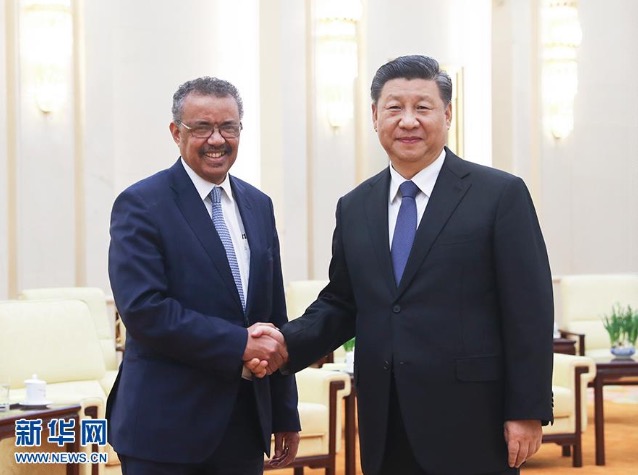
(Photo/Xinhua)
1. Why were mass quarantines exercised on Wuhan and other epidemic areas?
Quarantine is a traditional and yet the most effective measure to contain a deadly epidemic, although it may bring unforeseen risks and consequences. Because there is no specific cure or vaccine against virus-caused infections (including 2019-nCoV),standard public health emergency measures usually prove most efficient, including isolating the sources of infection, cutting off or interrupting transmission routes, and special care for the most susceptible people. Available medical evidence shows that humans, regardless of gender, age, or race, are all susceptible to this deadly new coronavirus; thus, in the absence of specific cure or vaccine, source isolation and transmission chain interruption are by far the only reliable and effective methods. The unprecedented exercise of a full quarantine on Wuhan, the heart of the outbreak, reflects China’s dedication as a responsible great power. In fact, since the quarantine began, the number of confirmed cases in all regions has grown at a much lower speed than that in the epicenter Hubei province; and Wuhan remains the only city with concentrated infections. Of all the confirmed cases outside Hubei province, the majority of patients have either lived in or traveled to Wuhan or other areas of Hubei recently, and the rest have been in close contact with the above-mentioned patients. So far, there has been no reported incident of local community transmission or any new epicenter of outbreak. Based on these facts, we can conclude that strict control over population outflows from Hubei province is an effective way to contain the spread of the deadly virus. At present, high-level emergency alerts have been activated all across China and vigorous public health measures taken to identify, diagnose, and isolate infections or suspected cases at the earliest possible moment. At the same time, the Lunar New Year holidays have been extended to keep the nation-wide migration of population at the minimum level; and travelers from Wuhan and other epidemic areas are advised to report their travel records and to self-quarantine for two weeks to prevent community transmission. The reported five million people who had left Wuhan before the lockdown announcement are not panicky evacuees, but migrant workers seeking family reunions back in their hometowns or holiday travelers taking their leisure time around China and even abroad.
What would happen if China had not closed off Wuhan and other epidemic areas? According to credible analysis, highly-connected global transport networks may enable contagious pathogens to spread from backwater villages in unknown corners of the world to major cities on six continents in less than 36 hours and trigger outbreaks or cause epidemics. Yet in China, by January 30, 2020, more than a month after the first confirmed case was reported and eight days after the Wuhan lockdown, there had been 18 countries reporting 98 scattered cases of infection altogether,according to the latest WHO report. Had the Chinese government not taken determined efforts to quarantine the places with concentrated confirmed cases, the deadly virus may have spread all over the world and generated devastating impact on the global economic and public health systems. As WHO Director-General Tedros Adhanom Ghebreyesuson correctly pointed out at a press conference on January 30, “the Chinese government is to be congratulated for the extraordinary measures it has taken to contain the outbreak, despite the severe social and economic impact those measures are having on the Chinese people”.
Beijing is doing everything possible to ensure sustained supplies of daily necessities and medical materials. Hubei province is abundant in natural resources and basic supplies have never fallen short. The Ministry of Commerce has activated a material-supplying mechanism involving nine provincial authorities, through which basic items, including medical materials, steadily flow into Hubei. It is a long-running tradition for the Chinese to store more than enough food and other items for the Spring Festival season and many households in Wuhan have already accumulated ample supplies before the lockdown. So there is not a general shortage of food or other life necessities. Wuhan citizens are not left in a deserted city to their own devices. Food supplies and basic social services are fully ensured. Although Wuhan’s public transport has been suspended, local residents’ personal freedom has not been restricted and most households have opted for self-quarantine to avoid potential infection. Those who have to travel are offered vehicles by community-level organizations. Public mood is improving as local residents’ lives begin to come back to normal with regular information disclosure and stepped-up personal hygienic measures.

(Photo/Eastday.com)
Hubei province has 72 grade-A hospitals and 942 other medical facilities, of which two of China’s top ten hospitals are located in Wuhan, together with 229 other medical facilities. Medical institutions across China stand ready to provide assistance to Wuhan at request and groups of medical personnel are arriving at Wuhan to reinforce the local public health system. Following the model of Xiaotangshan Hospital built in 2003 to treat the severe acute respiratory syndrome (SARS) victims in Beijing, three new hospitals are erected in Hubei, including the 1,000-bed Dabieshan Regional Medical Center in Huang Gang, which was put into full operation on January 28, as well as the Huoshenshan Hospital (with 1,000 beds and covering 34,000 square meters) andLeishenshan Hospital (with 1,500 beds and spanning 75,000 square meters) in Wuhan, which are expected to be ready for use on February 3 and 5, respectively -- within 10 days after plans for construction were made. Full operation of the three facilities will further enhance the local public health capacities.
2. Can the Chinese government manage to contain the epidemic?
China has adopted a whole-of-government approach, coupled with full social mobilization, in the fight against the 2019-nCov epidemic.

(Photo/Eastday.com)
At the central level, Beijing has been on high alert since the early days and activated the public health emergency response mechanism as soon as confirmed cases rose to 200. On January 20, President Xi Jinping and Premier Li Keqiang instructed governments at all levels to pay highest attention to the development of the epidemic. The National Health Commission and local authorities were ordered to activate all- round emergency response mechanisms. On January 25, Premier Li was designated chair of a newly established central leading small group on battling the 2019-nCov epidemic and visited Wuhan two days later to inspect the latest progress and boost public morale.
Rapid mobilization at the top level catapulted the whole nation into instant reaction. At present, more than 52 batches of medical staff of 6,097 professionals are working in Wuhan and other places in Hubei. Medical supplies including face masks, protective suits, and medicines are arriving in epidemic areas. The Ministry of Industry and Information Technology has urged medical suppliers across China to restore to their full productive capacity to ensure sustained provision of all necessary items. The Ministry of Finance has allocated 1 billion RMB in emergency funds for Wuhan and Hubei. Vegetables, food, and other life necessities have been sent from other places to Wuhan for the nine million residents there.
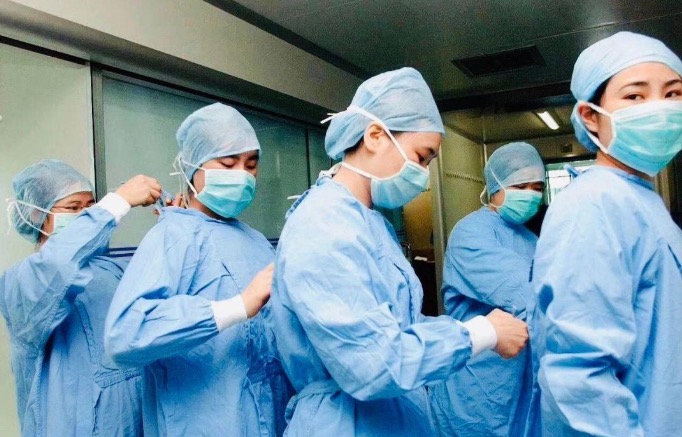
(Photo/Global Times)
Local authorities are taking every measure in epidemic control and prevention. At the moment, most of the confirmed cases reported in regions other than Hubei are imported infections -- patients have either traveled to or lived in Wuhan or come into close contact with infected victims. There has been no epicenter of outbreak except Wuhan due to early government intervention. For now, top priorities for local governments include: identifying and caring for symptomatic patients, and advising and monitoring people with Wuhan travel records to self-quarantine. Restrictive measures such as migration control and mass quarantine may give rise to social disorder, which requires appropriate responses from local authorities. Price control and quality supervision are also necessary as demands for face masks and liquid soap have soared.
Local authorities have a crucial role to play in vast rural areas, since residents there only have vague awareness of personal hygiene and many remain reluctant to wear face masks and wash hands with soap even if infection seems imminent. New year greetings and family reunions during the Spring Festival also significantly increase the likelihood of mass infection. In the absence of quality medical resources, local authorities play an indispensable role in imposing self-quarantine, advising against unnecessary travels or visits, and promoting public health education.
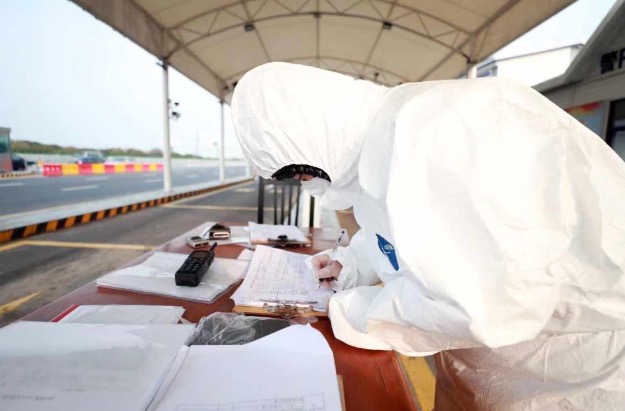
(Photo/Eastday.com)
Apart from implementing local prevention and control measures, provincial and local governments, at the request of the central government, are also supposed to provide timely assistance to Wuhan in terms of hospital staff, medical materials, and food supplies. Factories have difficulty restoring to their full manufacturing capacities as most of them are understaffed, under-supplied, and under-funded during holidays. Local authorities should mobilize and coordinate resources to assist those factories to return to operation. Inter-provincial assistance and coordination reflects a nation-wide consensus on the imperative of standing up to challenges at critical moments.
Enterprises and the general public are also contributing to the combat against the epidemic. Financial and material donations from Chinese enterprises have been growing since the onset of the deadly virus. Charities and Red Cross agencies in Hubei have received up to 4. 26 billion RMB and 5.29 million pieces of materials in donation by the end of January. Corporate giants like Alibaba and Fosun International Limited have made overseas purchases to supply urgently needed medical equipment to Wuhan.
What is worth noting is that Chinese tech firms have proven that the Internet plays a special role in China’s social governance. For example, Tencent has set up eleven platforms providing online services such as information disclosure and medical advice. One platform offers online medical clinical services aimed to reduce feverish patients’ exposure to virus in hospital. Another platform helps calm down the public by debunking rumors and conspiracy theories. Didi, a car-hailing service firm, has set up a dedicated convoy to ferry medical staff amid Wuhan’s traffic shutdown. Another firm has devised a search app whereby users can check whether they have been the fellow-travelers of an infected victim. From the SARS outbreak to the 2019-nCov epidemic, Internet companies have shouldered increasing corporate responsibilities in times of crisis.
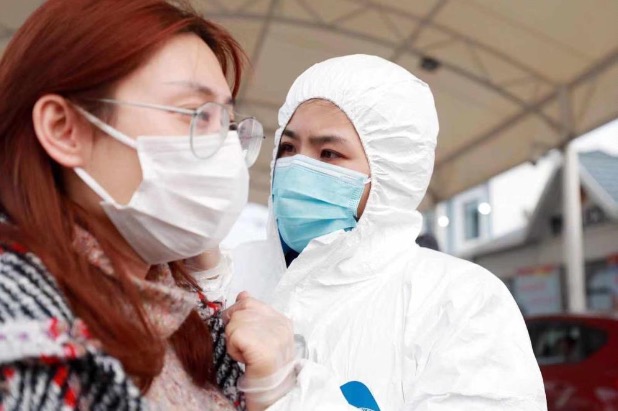
(Photo/Eastday.com)
The Chinese public has experienced a quiet Spring Festival as many have canceled their scheduled gatherings and planned vacations. Despite the initial anxiety, criticism, and concerns over information disclosure, the general public’s conscience and rationality in a country with 1.4 billion population and 800 million netizens are commendable. With enhanced information transparency by the government, initial criticism soon abated and in its place were optimism and general support of government initiatives and programs. Now, the public is admiring the courageous medical staff from all over China working in Wuhan hospitals, hailing Dr. Zhong Nanshan -- the first professional boldly warning against human-to-human transmission -- as a national hero, and watching live at 3 a.m. the construction of the Leishenshan and Huoshenshan hospitals with chants of “Hang on Wuhan, we stand with you.” Today, instead of complaining and grieving, more and more Chinese people are comforting and encouraging each other. This boosted public morale has contributed to the rapid social mobilization for epidemic prevention and control.
At the same time, public donations to Wuhan have never stopped since the early days of the combat. Besides donations to Wuhan charities and Red Cross agencies, the public has mailed to Wuhan face masks and protective suits. Social groups have volunteered to work in Wuhan. Overseas members of alumni societies of Wuhan University, Nanjing University, and Tsinghua University have provided urgently needed medical materials to Wuhan hospitals. Many medical associations have volunteered to provide counselling services to ease patient families’ fears. In Shanghai, some residents salute the service and sacrifice of those front-line medical personnel by sending them milk tea, bread, and fine meals. Some warmhearted citizens place hundreds of face masks at a police station’s entrance without leaving their names. These acts and moments of appreciation and love reflect the growing determination of the Chinese people to conquer the 2019-nCov epidemic.
3. What effect is the epidemic likely to have on China’s economy?
There are three major views, both in China and abroad, about the negative impact of the 2019-nCov epidemic on China’s economy. The “critical impact” theory tends to think that it will have serious effect on the already slackening Chinese economy, even causing a slide of its growth rate and handicapping global economy. Based on data about the economic impact of SARS in 2003, the “manageable impact” theory believes that the epidemic will have only limited and controllable effect on China’s economy, and that China’s economic performance of the whole year will not be much influenced despite a declining growth rate in the first season. The “uncertain impact” theory holds that historical evidence does not tell much about the future economic trajectory, but the actual economic impact depends on how long the epidemic will last. After all, China’s economic size (99 trillion RMB in GDP) is 9 times that of 2003 (11.7 trillion RMB).

(Photo/Chinanews.com)
Indeed, it would be imprudent to judge the economic impact of the epidemic by historical experience. The new millennium has witnessed the outbreak of a number of epidemics, natural disasters or other acute incidents in China. Yet the Chinese government has managed to contain and tackle them one by one, including SARS in 2003 (which caused the biggest short-term effect on economy), H1N1 (swine flu) in 2009, and H7N9 (bird flu), as well as the Wenchuan earthquake in 2008. Even in face of the rampant global financial crisis in 2009, China was able to maintain steady growth of economy with a strong stimulus package and collective international efforts led by the Group of Twenty (G20).
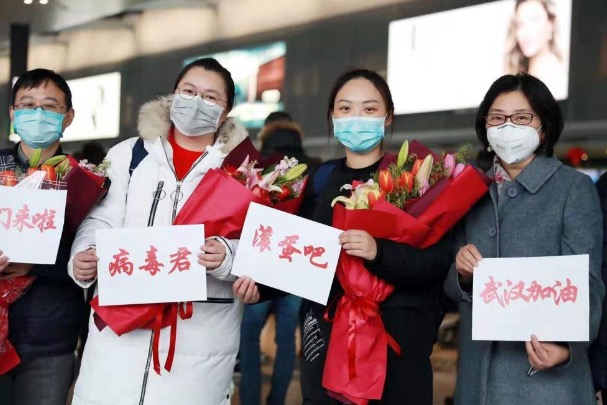
(Photo/Eastday.com)
It is worth noting, however, that the potential impact of the 2019-nCov epidemic can be different from all the previous epidemics and other incidents. For one thing, it occurs when China’s economy, in the midst of a transition from high-speed growth to high- quality development, faces three daunting tasks domestically, i.e., guarding against systemic financial risks, control of pollution, and poverty eradication; externally, with globalization under unprecedented challenges and China-U.S. trade frictions only starting to ease, China’s economy will be further hit if the country is labeled as an “epidemic area.” For another thing, the current epidemic has influenced larger areas and to greater degrees. Not only are the complete quarantine of Wuhan city and first- level response applied by more than 30 provinces or municipalities the first time in history, but the epidemic has impacted all economic fields across the nation; its effect on small- and medium-sized enterprises is yet to be seen, while China’s employment, local government debt issue, and stability of the RMB value are all under severe test. It is widely forecast that China’s economic growth will be down by 1 to 1.5 percentage point. Some even doubt if China’s economy can achieve a 5-percent growth in 2020.
To be more specific, the 2019-nCov epidemic poses direct harm on three main sectors of China’s economy: (1) the service sector, especially such consumer industries as tourism, catering, entertainment and logistics (in particular for small- and medium- sized enterprises); (2) the manufacturing sector, typically in mobile phone, automobile and electronic industries, due to indefinite time for return to operation, which may to some extent disrupt the global industrial chains; as a manufacturing center in China, Wuhan city is under heavy economic blow; and (3) the trade sector, owing to potential cuts or even shutdown of airlines, sea routes and borders by some countries as a result of the prevailing panic or geopolitical considerations.
Nevertheless, the resilience of China’s economy cannot be underestimated. Even in the short term, the epidemic does not cause merely negative effect on economy, but it has benefited such industries as electronic commerce and online game and entertainment. At the same time, the Chinese government boasts strong financial capacity in crisis management -- as of January 29, 2020, a total of 27.3 billion RMB (nearly $4 billion) had been provided by governments of all levels for epidemic control; more policy measures will be adopted as the epidemic continues. In the mid-term, some Americans doubt if China is able to fulfil its commitment made in the Phase I deal with the United States; however, China’s purchase of U.S. agricultural products is expected to reach a new high for the deal has greatly wiped off the uncertainty of China-U.S. trade relations; besides, due to the epidemic, China is very likely to increase purchase of other products, such as medical equipment and supplies. Notably, the epidemic will be taken into full consideration in the making of China’s 14th Five-Year Plan (2021-2025) and new measures are expected to be adopted to stimulate economy for the next five years. In the long run, as China has grown to be the second largest economy, the epidemic cannot undermine its huge potential in consumption, urbanization, and such new economic fields as 5G and artificial intelligence.
4. How can the international community cope with the epidemic for common human security?
In our globalized world, the 2019-nCov epidemic will inevitably have global impacts. Committed to promoting the building of a community of shared future for mankind, China has been striving to undertake its due international responsibilities and obligations in countering the epidemic.
Above all, with utmost openness and promptness, the Chinese government is working closely with the World Health Organization (WHO) on every step of the epidemic, exemplified by President Xi’s meeting with WHO Director-General Tedros Adhanom Ghebreyesuson on January 28. After the Director-General declared the 2019-nCov epidemic as a “public health emergency of international concern (PHEIC),” China’s mainstream media like People’s Daily and Xinhua News Agency reported the news instantly, indicating that the Chinese government has nothing to hide from the public and that the Chinese people are fully confident in conquering the epidemic.
Next, the Chinese government has given full understanding and assistance to other governments’ actions to prevent the epidemic, such as some countries’ evacuation missions from Wuhan and their decisions to halt airlines to China. All such requests will continue to be met with utmost efficiency and generosity from the Chinese government.
Furthermore, the Chinese government has remained open and grateful to all kinds of assistance from other countries in countering the epidemic. At the same time, China is considering promoting such cooperation in future epidemics of the world.
Finally, both the Chinese government and public opinion are quite concerned about the impact of the epidemic on the world. For example, the government has been trying to minimize the spread of the epidemic to other countries by increasing control of overseas travels by the population in worst-hit regions and calling on the public to take social responsibilities in preventing the dissemination of the virus.
With regard to the global concern over the 2019-nCov epidemic, we suggest the following joint actions by the international community for our common security:
First, optimize the existing epidemic information disclosure mechanisms. China’s daily “epidemic bulletin” broadcast in multiple languages plays the key role, in particular the languages of neighboring countries, such as Russian, Japanese, Korean and English, so that related information and data can be accessible to the public before fake news and rumors begin to spread. Successful actions of the Chinese government in preventing the spread of the epidemic can be introduced in detail in the Bulletin, too. The real-time Bulletin in multiple languages should be put on the websites of the Ministry of Foreign Affairs and Chinese embassies and consulates abroad. Meanwhile, we strongly hope that international media and thinktanks maintain an objective, comprehensive and humane stance in conducting reports or analyses of the epidemic and avoid hyping unconfirmed information or even rumors.
Second, strengthen international exchange of experience in epidemic control. It is important for China to translate the latest Guidelines for Preventing the 2019-nCov into different languages and pass it over to neighboring countries swiftly and in multiple forms (such as by social media). It will not only help those countries counter the epidemic with Chinese experience, but also contribute to China’s image as a “kind neighbor” and “responsible great power.” We call for more support from the United States, EU and other developed countries in medical equipment and supplies, as well as their best practices in epidemic control.

Third, oppose discrimination against epidemic-struck regions and people. The epidemic must not become a new fence between countries, but it should be turned into a new bridge across nations. At present, China’s Ministry of Foreign Affairs as well as embassies and consulates abroad are in close contact with the governments and health and epidemic prevention agencies of other countries, updating them with the latest progress in countering the epidemic. Chinese communities abroad also keep a close eye on the health conditions of Chinese living in their neighborhood; and they are ready to help local epidemic prevention agencies, if necessary, to provide certifications for healthy Chinese or those proven healthy through self-quarantine, so as to prevent ugly anti-Chinese events due in large part to incomplete information. We hereby advocate that the public in all countries remain calm about the epidemic and avoid discrimination against Chinese or any infected persons. For we, as human beings, are one family and no ethnic group can stand immune to our common challenge.
(Source: Shanghai Institutes for International Studies)

 Award-winning photos show poverty reduction achievements in NE China's Jilin province
Award-winning photos show poverty reduction achievements in NE China's Jilin province People dance to greet advent of New Year in Ameiqituo Town, Guizhou
People dance to greet advent of New Year in Ameiqituo Town, Guizhou Fire brigade in Shanghai holds group wedding
Fire brigade in Shanghai holds group wedding Tourists enjoy ice sculptures in Datan Town, north China
Tourists enjoy ice sculptures in Datan Town, north China Sunset scenery of Dayan Pagoda in Xi'an
Sunset scenery of Dayan Pagoda in Xi'an Tourists have fun at scenic spot in Nanlong Town, NW China
Tourists have fun at scenic spot in Nanlong Town, NW China Harbin attracts tourists by making best use of ice in winter
Harbin attracts tourists by making best use of ice in winter In pics: FIS Alpine Ski Women's World Cup Slalom
In pics: FIS Alpine Ski Women's World Cup Slalom Black-necked cranes rest at reservoir in Lhunzhub County, Lhasa
Black-necked cranes rest at reservoir in Lhunzhub County, Lhasa China's FAST telescope will be available to foreign scientists in April
China's FAST telescope will be available to foreign scientists in April